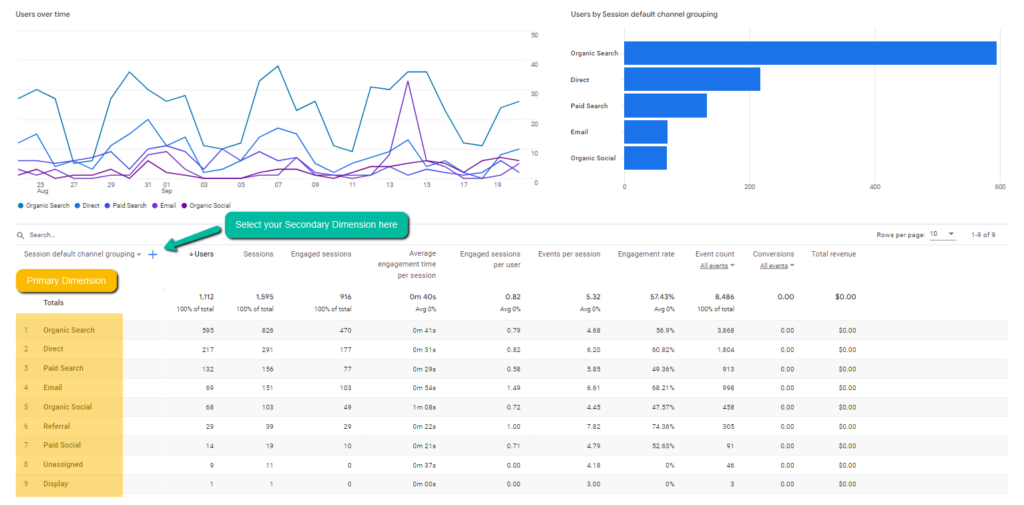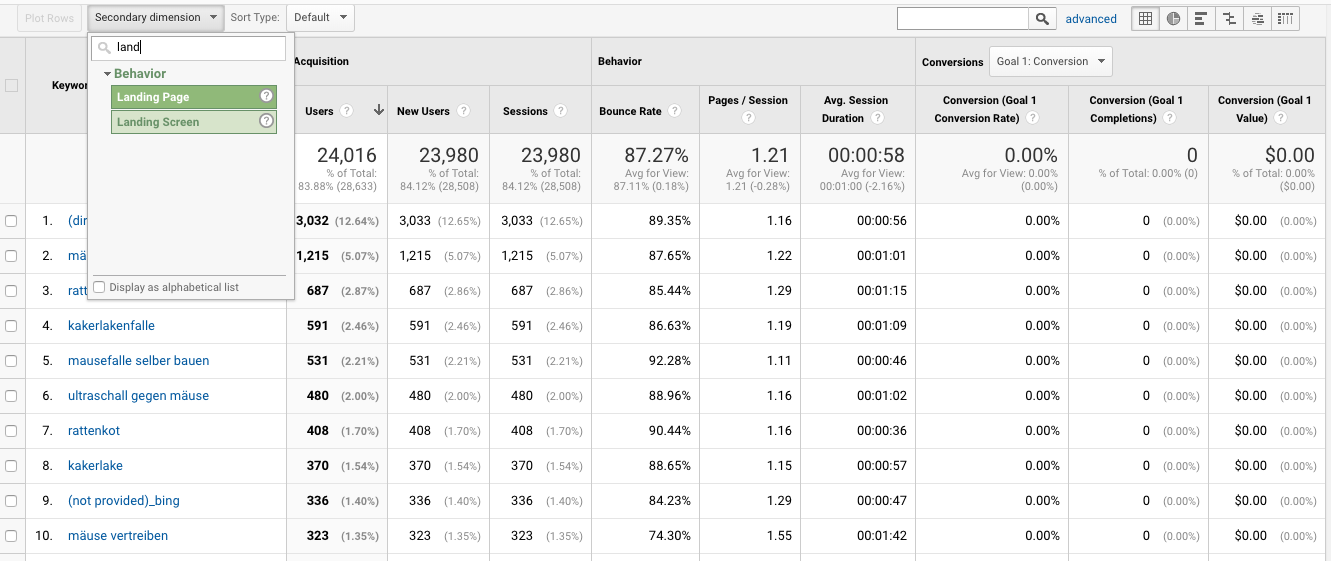Checking Out Google Analytics Secondary Dimension: Methods and Benefits
Checking Out Google Analytics Secondary Dimension: Methods and Benefits
Blog Article
Optimizing Your Digital Method With Second Measurement Analytics: a Comprehensive Overview
In the world of digital method, the utilization of additional dimension analytics can offer an extensive understanding of individual behavior and site performance. By delving deeper right into the layers of data past the main metrics, companies can discover valuable understandings that pave the means for critical decision-making and enhanced performance. From untangling the ins and outs of individual communications to make improvements advertising and marketing projects, the possibility for leveraging second dimensions is vast. As we browse with the complexities of this extensive overview, we are readied to decipher the tactics that can change electronic techniques and move organizations towards extraordinary success.
Recognizing Secondary Measurement Analytics
Understanding Additional Measurement Analytics provides a crucial insight right into the innovative logical devices made use of in contemporary data analysis techniques. These analytics dive deeper than key dimensions, using an extra extensive understanding of information patterns and fads. By integrating second dimensions, analysts can section and filter information to reveal covert insights that might not be apparent with primary analysis alone.
Additional Measurement Analytics enables a much more granular assessment of information by presenting additional parameters that can be related to the key measurements - secondary dimension. This approach enables a much more nuanced examination of numerous information points, causing an extra extensive evaluation of complicated datasets
In Addition, Second Dimension Analytics plays a considerable function in improving data visualization methods. By integrating additional dimensions into graphes, such as graphs or charts, experts can present information in an extra thorough and useful way, making it simpler for stakeholders to make and grasp key understandings educated choices based upon the data presented.

Executing Additional Dimensions Efficiently
Utilizing secondary measurements purposefully boosts the deepness and precision of data analysis procedures, permitting a lot more exact insights and educated decision-making. When carrying out second measurements successfully, it is important to very first identify the vital metrics that line up with your particular goals and purposes. By selecting one of the most pertinent additional measurements, such as demographics, habits, or innovation, you can tailor your evaluation to extract purposeful understandings.
Additionally, organizing and structuring your second dimensions in a logical way within your analytics platform can simplify the data analysis process. secondary dimension. This involves classifying dimensions based upon their relationships and value to the main metrics being analyzed. Developing custom-made records or dashboards that incorporate these secondary dimensions can likewise help with an extra detailed understanding of customer interactions and actions
Furthermore, frequently reviewing and readjusting your secondary dimensions based upon the evolving requirements of your electronic technique is necessary for keeping the relevance and performance of your information analysis initiatives. By continually optimizing the use of second dimensions, you can make the most of the energy of your analytics devices and drive informed decision-making within your organization.
Analyzing Data for Actionable Insights

To start the procedure of analyzing data for actionable insights, it is vital to develop clear purposes and vital efficiency indications (KPIs) that align with the company's objectives. By Bonuses specifying what success resembles for the details metrics being analyzed, it becomes simpler to identify meaningful patterns and trends that can inform decision-making.
Moreover, utilizing tools such as division and contrast analysis can offer additional context to the data, permitting even more nuanced insights to be attracted. By damaging down information right into smaller, more workable subsets, companies can reveal concealed possibilities and areas for improvement that may not appear when looking at the information in its entirety.
Optimizing Digital Approach With Searchings For
Enhancing digital techniques through workable insights gleaned from information analysis is important for achieving optimum efficiency in today's competitive landscape. As soon as useful findings have actually been drawn out from the data, the following step is to leverage these understandings to enhance digital approaches successfully. One crucial aspect of this optimization procedure is the identification of fads and patterns that can assist decision-making and resource allowance.
By evaluating the information findings, businesses can identify areas of stamina and weakness within their electronic strategy. This info can then be utilized to improve marketing campaigns, boost user experience, and drive general efficiency enhancement. For instance, if the information exposes a certain demographic team that is highly engaged with particular types of material, businesses can tailor their approaches to better target and provide to this target market segment.
Furthermore, enhancing electronic method with searchings for additionally involves continuous monitoring and examination to make sure that the carried out adjustments are generating the wanted outcomes. By iteratively fine-tuning approaches based upon data-driven understandings, services can remain ahead of the competition and adapt to the dynamic digital landscape effectively.
Measuring Success and Iterating
Measuring success in electronic approach execution entails evaluating crucial efficiency indications to determine you can try this out the performance of methods and approaches deployed. This assessment is essential in figuring out the effect of the digital campaigns on the total service goals. By tracking metrics such as website web traffic, conversion rates, click-through rates, and interaction degrees, companies can assess the efficiency of their digital campaigns and make data-driven decisions for renovation.
As soon as the data has been accumulated and evaluated, it is important to iterate on the approaches based on the understandings acquired. This iterative process includes making adjustments to the electronic strategies to maximize performance continually. By recognizing what is working well and what requires renovation, companies can refine their electronic strategy to improve outcomes. This cyclical method of measuring, examining, and iterating is fundamental to making the most of the performance of digital campaigns and ensuring that they line up with the company's objectives and objectives. Inevitably, continuous tracking and improvement are key to remaining affordable in the ever-evolving digital landscape.
Verdict
In final thought, integrating Going Here additional dimension analytics into your digital strategy can provide beneficial understandings and boost decision-making. By successfully executing and assessing information, companies can optimize their electronic approaches for success.
Comprehending Second Measurement Analytics gives a vital insight right into the innovative analytical tools utilized in modern-day data evaluation methods. These analytics delve much deeper than main dimensions, offering an extra detailed understanding of data patterns and fads. By integrating secondary measurements, analysts can sector and filter data to uncover surprise understandings that may not be evident with primary evaluation alone.
Utilizing second dimensions purposefully improves the depth and precision of information analysis procedures, enabling for extra exact understandings and informed decision-making.In addition, arranging and structuring your secondary measurements in a sensible way within your analytics system can improve the information interpretation process.
Report this page